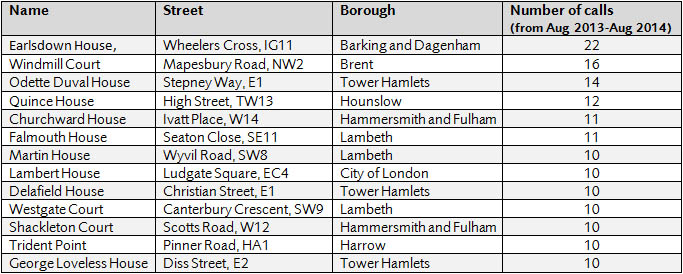Today we exclusively revealed the places in the capital where you are most likely to get shut in a lift.
Firefighters attend 13 non urgent lift call outs every day, which is nearly 5,000 incidents a year. These are calls when a person is shut in a lift but not in any immediate physical or medical danger.
The knock on effect from this is a reduction in our capacity to attend real emergency incidents, carry out community safety work and provide essential training for firefighters.
We started recovering costs for non-emergency call-outs in 2009. While lift releases have decreased since the charges were introduced, the amount of call outs is still too high. Not only that but time and money is spent chasing building owners who have yet to pay their 'shut in lifts' bill. We're currently owed nearly £250,000 in unpaid charges.

London Fire Brigade Third Officer, Dave Brown, said:
"If there is a genuine emergency we will be there but on many occasions if you are shut in a lift it's an inconvenience not an emergency situation. It's the responsibility of building owners to maintain their lifts and ensure they use a lift engineer call out service if the lift breaks down.
"The Brigade is always willing to work with building owners to advise on lift safety. Preventing people getting shut in lifts is in everyone’s interest and we're calling on all building operators to ensure their lifts are regularly maintained and that their staff are properly trained to release people who get shut in them."
Under existing rules we are entitled to recover £290 plus VAT from owners of buildings and lifts for attending non-emergency lift call outs. The charge is applied from the third occasion firefighters are called to the same building. The cost recovery scheme was implemented to incentivise building owners to tackle the problem.
Some lift owners in London have taken significant steps to improve the maintenance of their lifts and to provide effective engineer call out arrangements. Where outstanding improvements have been made, we’ve introduced exemptions from the charging process.